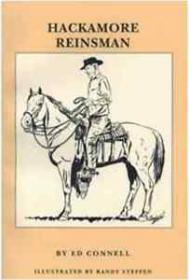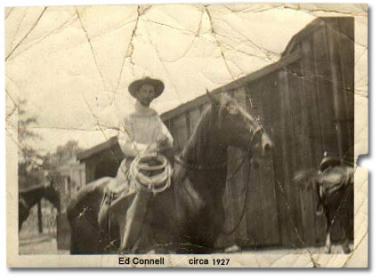[QUOTE=Draftmare;9030463]
I was looking more at an Indian hackamore, or a english hackamore, not so much a bosal. I don’t know if that makes any difference in the advice being given.
Showing in one has already kind of fallen by the wayside my instructor feels that we really need to find a bit. Her experience has mirrored many here in that judges don’t seem to know what to do with hackamore horses. I would still like to explore playing around with a hackamore on my own though. My mare was broke out in a sidepull, and I have ridden her in sidepulls before just fine.[/QUOTE]
Of all the bitless pieces of equipment you list, I think the sidepull is the simplest, best piece of equipment for you.
And, IMO, you should choose your horse’s equipment with an eye to it’s mechanical action and how that shapes your horse’s experience.
The beauty of a side pull (and I’ll tell you about the ones I like in a minute) is that it is simple, direct and enourages you (primarly) to use lateral flexion. You can produce longitudinal flexion with one, but that comes in a natural progression, after you have taught the horse the very simple idea that “When you feel me pulling on you, you can make that stop by giving into the pressure and flexing toard it. Pulling away or ignoring it win you no relief. There is only one right answer, and it will always be the right answer.”
So that concept in quotes above is all I want a horse to learn from a sidepull or a snaffle. It is imperative that your hand and/or the piece of equipment let go immediately when the horse does. There should be no delay of the reward for the correct behavior. After all, all the horse can do is recognize a pattern, so you must be clear and consistent with him.
And Indian hackamore, IMO, doesn’t “let go” fast enough. It can’t let go as fast as your hand putting a loop in the rein can. To me, then that means the piece of equipment dulls your aid.
I use a grooming halter tightened down around my horse’s nose (with a bit of sheepskin over the bridge of his nose) when I want a side pull. And like you, OP, I use this homemade contraption when I have a horse for whom the bit is somehow Just Too Much. (That is a separate problem that can be fixed… or improved most of the time. But it’s hard to teach the overly-sensitive horse the “You give when I take” concept AND how to tolerate the bit at the same time. I like to break down any potentially complicated experience into smaller, simpler component parts if I can possibly think of them.
So the beauty of a tight side pull is that my arm (or, later, hand or fingers) has a direct connection to the side of the horse’s head. There is no play in there created by a loose-fitting piece of equipment, rather all of the pressure or release of pressure is under my control.
In choosing a mechanical hackamore, I think you’d be getting a piece of equipment that has the desirable quality of a “quick let-go of pressure.” But I don’t think these are particularly good for teaching lateral flexion.
IMO, you want to get pure and correct lateral flexion first, often and for a very long time in a horse’s training before you drill him hard on flexing longitudinally. If you ask him to just “tuck his chin” too soon in his training, you’ll dig a hole for yourself because he will find a way to tuck his chin to escape pressure from your hand… but he might not lift up his back while he’s doing that.
Yeah. Don’t create that kind of horse…he’s hard, hard, hard to fix. And it takes a ton of feel, timing and skill to re-condition his body and his mind. Oh, and I’ll bet those stiff, inverted bridle horses of yore that Bluey spoke of had this done to them.



